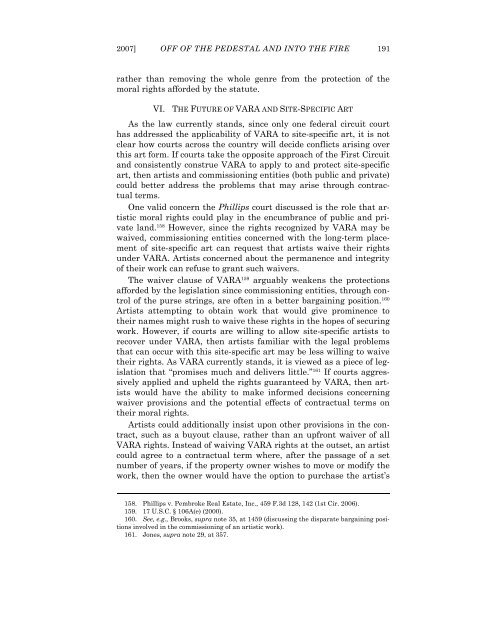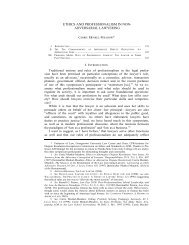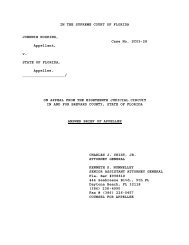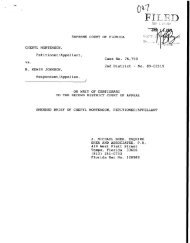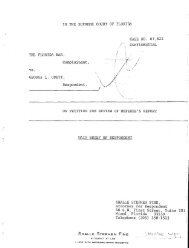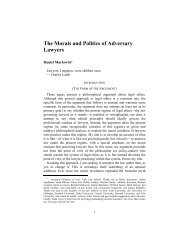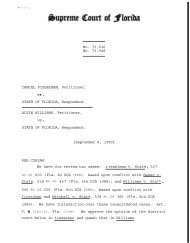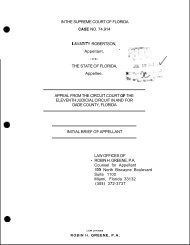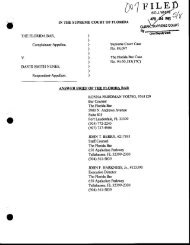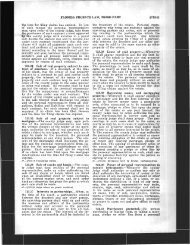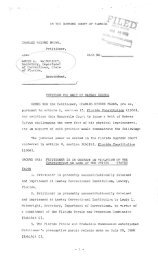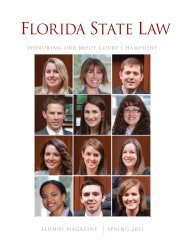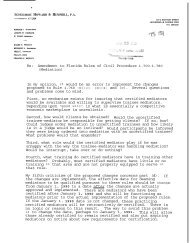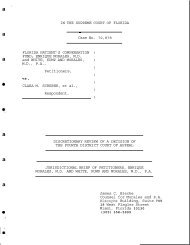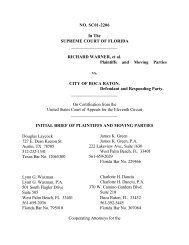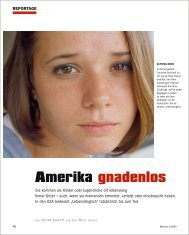Article PDF - Florida State University College of Law
Article PDF - Florida State University College of Law
Article PDF - Florida State University College of Law
- TAGS
- www.law.fsu.edu
Create successful ePaper yourself
Turn your PDF publications into a flip-book with our unique Google optimized e-Paper software.
2007] OFF OF THE PEDESTAL AND INTO THE FIRE 191<br />
rather than removing the whole genre from the protection <strong>of</strong> the<br />
moral rights afforded by the statute.<br />
VI. THE FUTURE OF VARA AND SITE-SPECIFIC ART<br />
As the law currently stands, since only one federal circuit court<br />
has addressed the applicability <strong>of</strong> VARA to site-specific art, it is not<br />
clear how courts across the country will decide conflicts arising over<br />
this art form. If courts take the opposite approach <strong>of</strong> the First Circuit<br />
and consistently construe VARA to apply to and protect site-specific<br />
art, then artists and commissioning entities (both public and private)<br />
could better address the problems that may arise through contractual<br />
terms.<br />
One valid concern the Phillips court discussed is the role that artistic<br />
moral rights could play in the encumbrance <strong>of</strong> public and private<br />
land. 158 However, since the rights recognized by VARA may be<br />
waived, commissioning entities concerned with the long-term placement<br />
<strong>of</strong> site-specific art can request that artists waive their rights<br />
under VARA. Artists concerned about the permanence and integrity<br />
<strong>of</strong> their work can refuse to grant such waivers.<br />
The waiver clause <strong>of</strong> VARA159 arguably weakens the protections<br />
afforded by the legislation since commissioning entities, through control<br />
<strong>of</strong> the purse strings, are <strong>of</strong>ten in a better bargaining position. 160<br />
Artists attempting to obtain work that would give prominence to<br />
their names might rush to waive these rights in the hopes <strong>of</strong> securing<br />
work. However, if courts are willing to allow site-specific artists to<br />
recover under VARA, then artists familiar with the legal problems<br />
that can occur with this site-specific art may be less willing to waive<br />
their rights. As VARA currently stands, it is viewed as a piece <strong>of</strong> legislation<br />
that “promises much and delivers little.” 161 If courts aggressively<br />
applied and upheld the rights guaranteed by VARA, then artists<br />
would have the ability to make informed decisions concerning<br />
waiver provisions and the potential effects <strong>of</strong> contractual terms on<br />
their moral rights.<br />
Artists could additionally insist upon other provisions in the contract,<br />
such as a buyout clause, rather than an upfront waiver <strong>of</strong> all<br />
VARA rights. Instead <strong>of</strong> waiving VARA rights at the outset, an artist<br />
could agree to a contractual term where, after the passage <strong>of</strong> a set<br />
number <strong>of</strong> years, if the property owner wishes to move or modify the<br />
work, then the owner would have the option to purchase the artist’s<br />
158. Phillips v. Pembroke Real Estate, Inc., 459 F.3d 128, 142 (1st Cir. 2006).<br />
159. 17 U.S.C. § 106A(e) (2000).<br />
160. See, e.g., Brooks, supra note 35, at 1459 (discussing the disparate bargaining positions<br />
involved in the commissioning <strong>of</strong> an artistic work).<br />
161. Jones, supra note 29, at 357.


